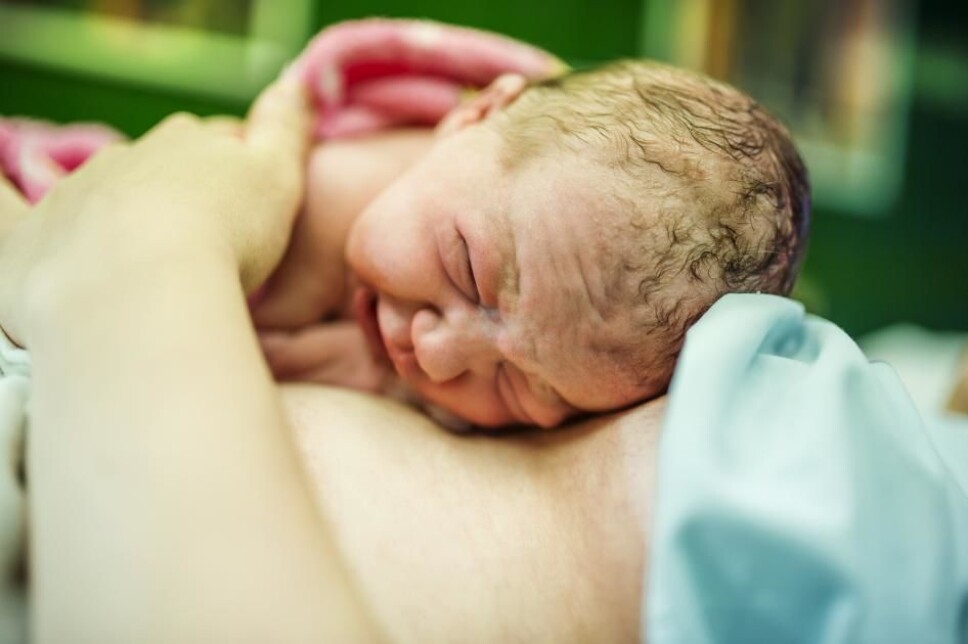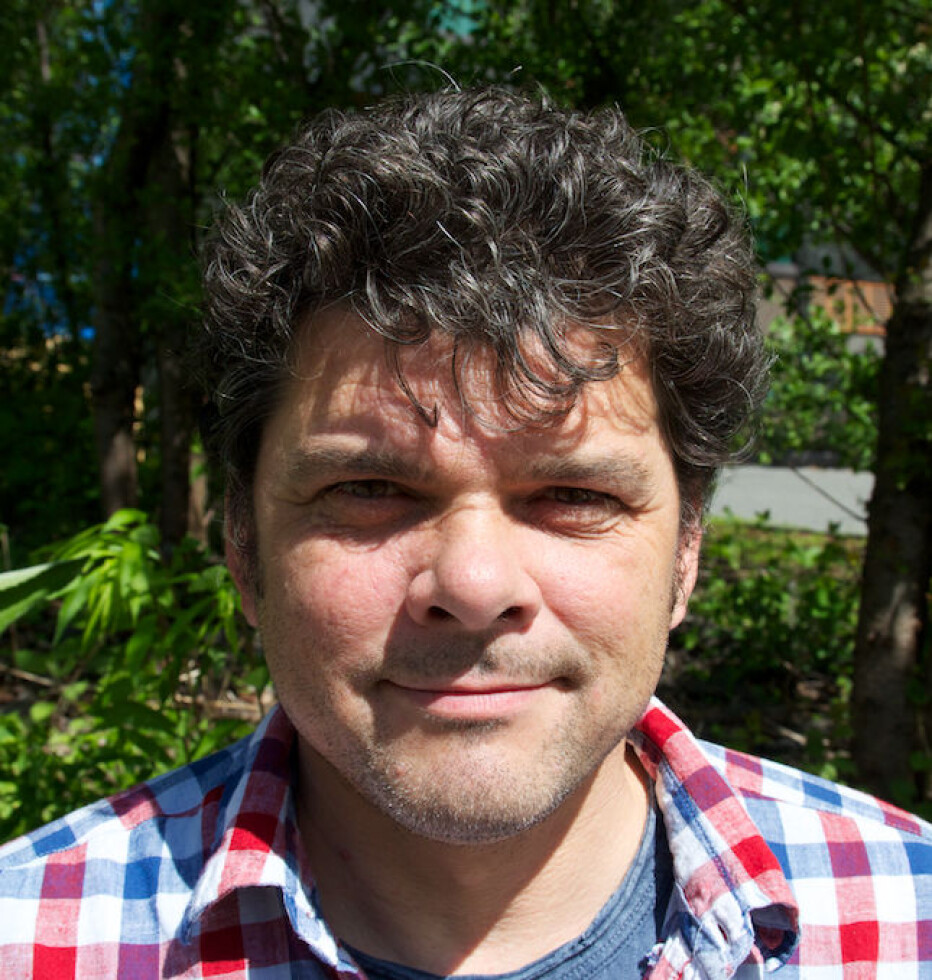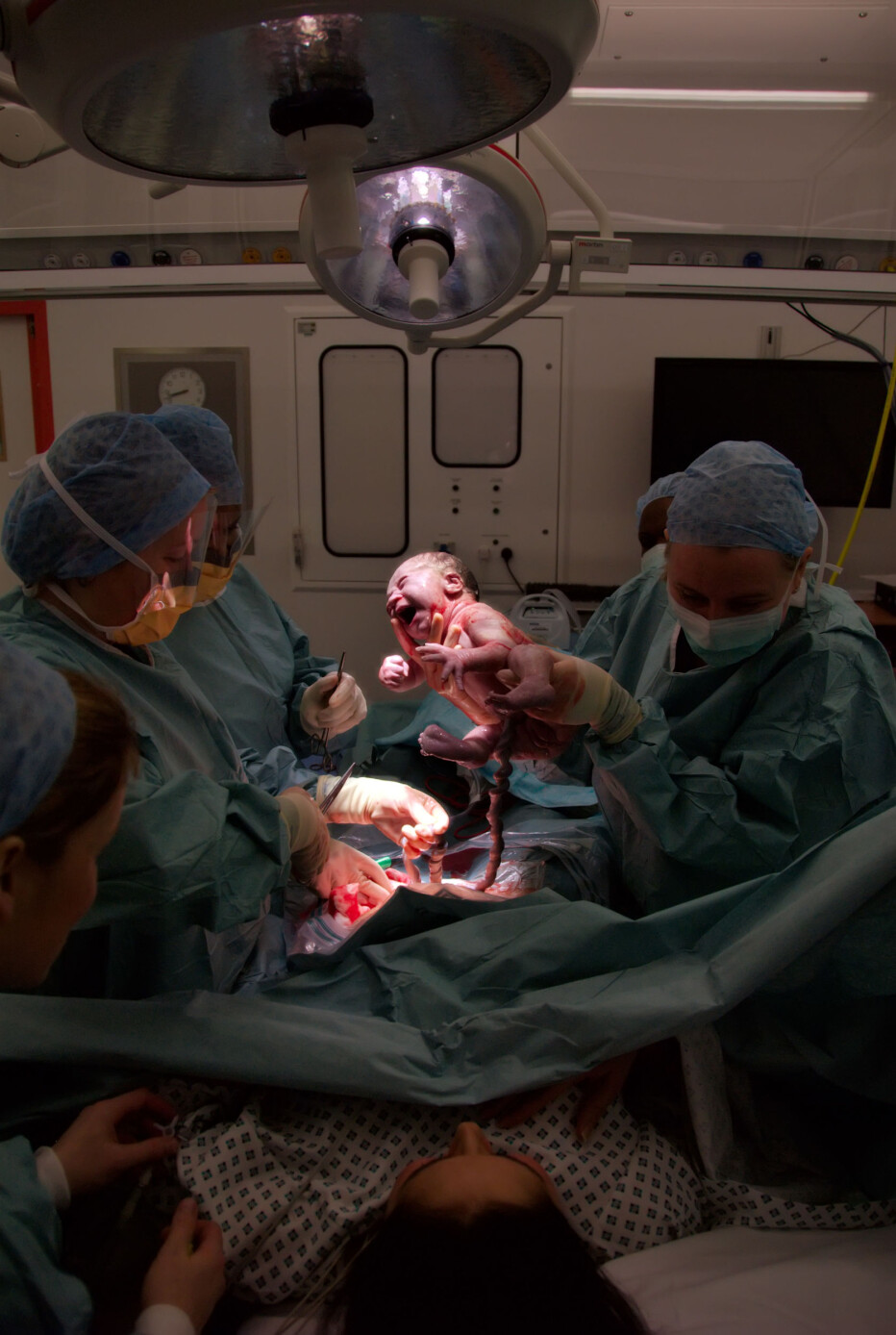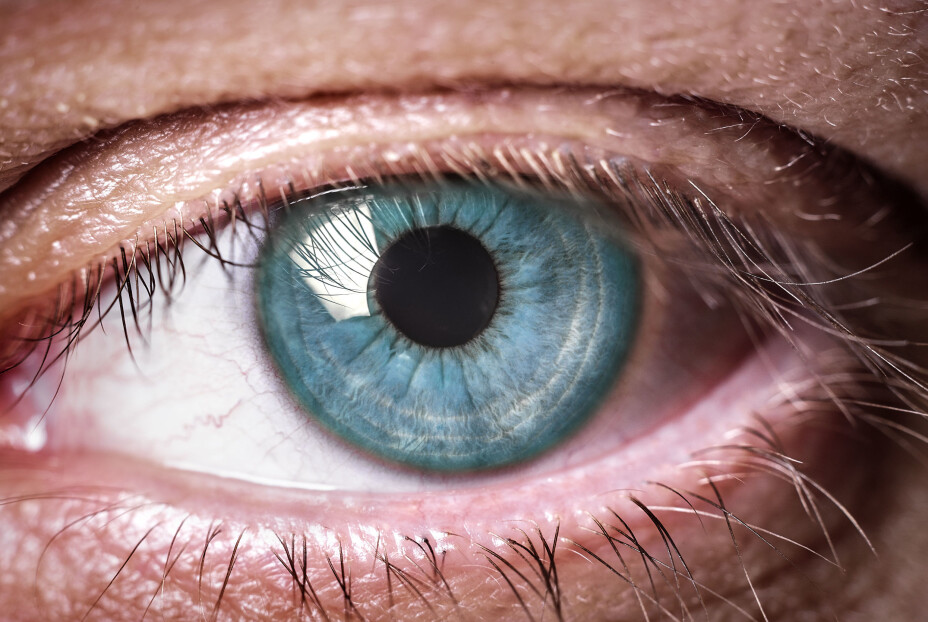This article is produced and financed by University of Oslo - read more

"Evolutionary flaws disprove the theory of intelligent design"
Evolution has produced amazing life forms, but you need look no further than to the human body to find examples of poor construction.
An obvious example of "unintelligent design" in the human body is that women have a narrow birth canal, which makes childbirth both more dangerous and more painful than in other species. Maternal death is now a rare phenomenon in industrialized countries, but according to the World Health Organization, the death rate in several African countries without access to Western medicine is up to approximately 200 times higher than that of Norway.
“The human body is also constructed poorly in a lot of other ways. We are for example not able to synthesize the all-important vitamin C, unlike other mammals. Therefore, we must either obtain vitamin C through our food or die from scurvy. It is unreasonable to claim that this is the result of an intelligent design”, professor Glenn-Peter Sætre at the University of Oslo points out.

Even eating can be dangerous
The evolutionary flaws do not stop there: The human body is even constructed in a way that makes it dangerous to eat! The problem is that both the food that should be heading for the stomach and the air that should be heading for the lungs, enters our body via the same channel – the pharynx. The air, the food and the water follows the same route down to the point where the pharynx splits into the windpipe (trachea) and the oesophagus. The windpipe is luckily equipped with a small valve or flap – the epiglottis – that stops food from entering it, but the epiglottis sometimes closes too late. The result is that food enters your trachea, where it can cause fatal choking.
It would have been smarter if food and air entered the human body via completely separate channels, such as in whales. These big mammals have developed blowholes on the top of the head, with the same function as the nostrils in other mammals. This means that whales do not have to raise the whole head above water to get air into the lungs. At the same time, the construction separates the trachea completely from the oesophagus, so that the whales do not run the risk of getting food or water in their windpipe or lungs when diving. In humans, we must rely on getting help from a bystander who is familiar with Heimlich's maneuver if our windpipe becomes blocked. However, whales have no need for friends with strong arms and knowledge about first aid.
“Wisdom teeth in humans are also an example of a poor construction. They are of poor quality, and there is often not enough room for them in the jaw. And why do we have an appendix? It has no function in our digestive system, and it can easily become infected. An intelligent and professional engineer could easily have avoided these flawed constructions in the human body”, Sætre adds.
Evolution is amazing!
Professor Sætre by no means believes that evolution is a miserable process. For example, it has given the world wonderful and varied creatures such as the tiger, the blue whale, and the finches on the Galapagos Islands. His point is instead that evolution has no foresight or intelligence; there is no plan that can guide the direction of evolution.
Charles Darwin's theory of evolution was presented in the book The Origin of Species in 1859 and is considered one of the greatest advances in science of all time. According to Darwin‘s theory, all life on earth has arisen through a process of change from pre-existing forms. This very process of change is called evolution.
“Evolution is amazing, but the process can only work on the genetic variation that is already present in a species at any given time. If some gene variants give higher survival rates or more reproductive success, more individuals in the next generation are going to have these genes. However, evolution cannot plan for a better trait and then develop a set of genes that will produce that trait. Therefore, the process of evolution has produced a number of suboptimal or non-perfect adaptations”, explains Sætre.
Improving the birth canal

The human birth canal is an obvious example of such a suboptimal solution. It works well enough for humans to survive, reproduce and populate the earth. But at the same time, both women and children risk their lives at every birth that takes place without medical supervision. The reason is that evolution has only managed to achieve a compromise between several different considerations, explains Professor Sætre.
“The main problem is that the birth canal passes through the pelvis, where space is limited. However, evolution has also equipped humans with big brains – which creates the need for a big skull. The skull simply cannot pass through the pelvis if it is too big, and evolution has solved this problem by allowing humans to give birth to children at a much more premature stage than in related species like the chimpanzee and the gorilla”, explains Sætre.
There is however a limit to how immature a baby can be at birth, and there is obviously also a limit to how big the pelvis can be. “We don't quite know what the most important limitation in the size of the pelvis is, but you can imagine that it would be difficult to walk upright on two legs with a very wide pelvis”, he comments.
A creative "designer" or engineer would not have had much trouble finding another solution. For example, childbirth would have been much easier if the opening of the birth canal was placed a little higher up the body, in the bone-free area between the pelvis and ribs. In this area, the fetus would not have to pass through a narrow opening in the bony skeleton on the way out. Human surgeons developed this particular solution – the Caesarean section – a long time ago.
“You would need a lot of mutations in order to change the positioning of the birth canal in a similar way. I really doubt that evolution ever will be able to come up with such a solution”, comments Sætre.
Intelligent design is unscientific
Charles Darwin's theory of evolution from 1859 is both famous and recognized in wide circles, but especially in the United States, a large number of people believe that there must be an intelligence and a designer behind creation. Supporters of intelligent design (ID) believe that nature is so finely tuned that evolution may not have progressed by chance, but instead is the result of forward-looking engineering. They want the public school system to teach ID as an alternative to the theory of evolution. From time to time, this debate also emerges in European countries.
Professor Glenn-Peter Sætre does not think it is a good idea to use resources to teach ID in the school system.
“In science, we make hypotheses and test them, and then we reject the hypotheses that cannot be confirmed. In this way we are getting closer and closer to the truth, but such a way of thinking is completely absent from the followers of ID. Instead, they “cherry-pick” natural phenomena that they think are a bit strange, and then they claim that these phenomena cannot be explained by evolution. Ergo, there must be a designer”, says Sætre.
“But unfortunately, the ID supporters do not care if their arguments are refuted time and time again. All the "unexplainable" examples they cite can be explained by the theory of evolution”, he adds.

The squid's eye is smarter
One of the favourite examples of ID adherents is the human eye, which they claim could not have arisen through an evolution without a plan. The reason is that all the constituents of the eye – the pupil, the lens, the retina with photosensitive cells, etc. – must be in place in order for the eye to work.
“But that argument ignores the fact that we find all kinds of eyes in nature. We, as biologists, can present a long list showing how the eye has evolved, from the simplest photosensitive organs of mussels for example, to the advanced eyes of mammals. There are also organisms where the development of the eye has gone further than in humans. The eagle and many other birds of prey have a much sharper visual sense than humans, and other bird species have photosensitive cells that can perceive light of wavelengths that are invisible to us”, explains Sætre.
Inventing the same thing twice
An intelligent designer would probably be satisfied if he or she invented gunpowder once, but the evolution without a plan does not work that way. Therefore, the eye and the sense of vision have developed several times over the millennia. This is why insects have a completely different eye than ours.
“The octopus has an eye that looks a lot like our human eye, except that it is much better! The retina of the squid does not have a blind spot because the "cables" that carry electrical signals from the photosensitive cells in the retina are exiting the eye from the back of the retina”, explains Sætre.
Instead, in humans and our evolutionary relatives, the eye is constructed so that the "cables" lie on top of the retina and block some of the incoming light from reaching the photosensitive cells. Not very smart. The construction also creates the need for the cables to pass through the retina, and this occurs in the blind spot, which is approximately 15 degrees from the point where the eye focuses the sharp vision.
There are no photosensitive cells in the blind spot, but you are not noticing this partial blindness on a daily basis because the brain compensates for the lack of visual information. Yet it is easy to prove that the blind spot exists; YouTube is full of evidence that the brain is guessing at what you would have seen if you had the eye of a cephalopod.
ID is a marginal phenomenon
Professor Glenn-Peter Sætre does not waste time annoying himself about the theory of ID, which is still a marginal phenomenon in Norway and in most other European countries.
“My impression is that the leading representatives of the major faiths in the world accept modern science. They realize that it is unreasonable to believe that the Bible should function as a textbook that trumps everything we have developed in knowledge and technology over the last 2000 years. It is not necessary to take the stories and parables of religious works literally, thus becoming a science denier”, says Sætre.
“I am an atheist myself, but I know that there are also evolutionists – especially in the United States – who are devout Christians. That combination is not as common in Norway, but then we are also a more secular society”, he adds.

The solar cells trump photosynthesis
The starting point for evolution is that the "machinery" that copies the DNA in our cells does not work flawlessly, so mutations occur all the time. Most of the mutations are disadvantageous, and they are weeded out when the individuals carrying them fail in the fight to survive and reproduce. However, some of the mutations are either neutral or beneficial, and these will give rise to a genetic variation that evolution can work on.
Although evolution has no plan, the process has nevertheless managed to produce such ingenious constructions as the chlorophyll molecule. This is both incredible and impressive! But director Vebjørn Bakken at UiO:Energy is not so impressed. The reason is that chlorophyll is only able to utilize between 1 and 2 per cent of the available energy in the sunlight.
“I have been slightly annoyed by some people who keep repeating that we should learn from the plants when we are developing efficient solar cells. Scientists have surpassed nature a long time ago”, says Bakken.
The most efficient solar cells available today are able to utilize an impressive 47.1 per cent of the energy in sunlight! Admittedly, these solar cells are very complicated and expensive concepts that are only available in the laboratory to date.
“But even if we stick to the common silicon solar cells – which completely dominate the market today – the theoretical limit of utilization is at approximately 29 percent efficiency. Much better than what nature and chlorophyll has achieved. The large volume of commercially sold panels are in the range of 16-19 percent efficiency", adds Bakken.
So, solar cells have long since achieved much better efficiency than nature.
“But I would like to add that human engineers have not yet achieved the same reliability and longevity that evolution has produced. A very ordinary tree can function without problems for hundreds of years, and this is far more than we have achieved with solar cells. Nature’s own photosynthesis is also capable of absorbing and converting CO2 at very low concentrations, so we still have something to learn from nature”, Bakken adds.
The selfish gene
In 1976, the British evolutionary biologist and author Richard Dawkins published the book The Selfish Gene. In the book, he argues that it is easier to explain evolution if you look at genes – instead of organisms – as the focus of natural selection.
“Dawkins’ argument is very useful, because it makes it easier to understand complex selection scenarios where there may be conflict between different levels. For example, we humans have a lot of “useless” DNA sequences in our genome – sequences that do not encode something we need. They are called transposons or transposable elements, and they act almost like some kind of parasite in the genome. They simply utilize the "machinery" in our cells to make copies of themselves, and they can often be directly harmful to the host organism. Dawkins' theory makes it easier to understand why the transposons exist”, comments Sætre.
The theory about the selfish gene also makes it easier to understand why there are sterile casts in ants, bees and other eusocial insects. Most individuals in an ant or bee colony are sterile females called workers, and they are never able to procreate and pass on their own genes to the next generation. However, their genes are largely copies of the genes that the queen carries, since the workers are her sisters. That point is good enough for evolution.
“Richard Dawkins' perspective makes it easier to understand the communities that eusocial insects live in. In fact, having a sterile caste can actually make the society more effective. In total, more ants are produced in an eusocial nest than if each ant had found a partner and reproduced on its own”, explains Sætre.
The principle of helping close relatives to reproduce can also explain human behaviour to some extent. The British scientist J.B.S. Haldane allegedly sat at a bar when he discovered the principle called inclusive fitness. Haldane argued that he might risk his own life and jump into a river if he could save the life of a close relative in danger of drowning, but he would hardly risk as much for any other person he was not closely related to. The explanation is that we share many genes with close relatives, but fewer genes are shared with total strangers.
Left- and rigth-leaning flatfish
Returning to the eye of the octopus, Professor Sætre argues that an intelligent designer would probably have settled for solving the same problem once. But evolution does not have a plan, and that is why there are a lot of different eyes out there. Evolution without a plan is also the reason why the birds and the bats and the bees have developed separate techniques for flying. Evolution has, by the way, given birds lungs that are far better constructed than the lungs of bats and other mammals. The birds have lungs consisting of long tubes running straight through their bodies, keeping all parts of the lungs well oxygenated. We mammals instead have to breathe in and out through the same passage, and the result is that we always have a residue of used air in the farthest corners of our lungs.

The American evolutionary biologist Stephen Jay Gould told us about another famous “double invention” in his book The Panda's Thumb from 1980. The title alludes that the ancestors of the present pandas did not have a thumb, but it would be useful to have a thumb when you spend a lot of time in trees. The result is that evolution gave the panda a thumb, but the funny thing is that the pandas' thumb did not develop from a normal finger. Instead, the panda's thumb is a modified version of one of the sesamoid bones in the hands, which basically has a completely different function.
Becoming flat boosts survival
Glenn-Peter Sætre has another example, which also illustrates that evolution can often invent the same thing twice: Flatfish and rays. Both are flat, but in different ways.
“A fish that lives close to the seafloor may have increased survival rates if it is able to hide from predators. Many millions of years ago, some ancestors of modern flatfish started to place their bodies sideways on the seafloor when hiding, because the reduced height made it harder to spot them. The sideways hiding caused one eye to end up in the mud, and that was not very clever. Fortunately, a series of random mutations in the genes of flatfish gave evolution something to work on. The result is the strange, asymmetrical flatfish we have today”, Sætre explains.
The proof is that juvenile modern flatfish looks like any other fish when they hatch from their eggs. The flatfish larvae have symmetrical bodies with an eye on each side. But as the flatfish grows, it changes its appearance. The body begins to tilt, and the eye on the one side begins to wander over to the other side. Finally, the body has changed so much that the left side has become a white underside and the right side has become a darker upper side – or vice versa. The adult flatfish has now obtained its characteristic appearance, which is well suited to camouflage on the seabed.
Professor Sætre points out that the ancestors of modern day rays – like the manta ray – went through a similar evolution. They increased their survival rates by becoming flat and easier to hide, but they did not lie down sideways as the ancestral flatfish. Instead, they settled straight down on the seafloor and started flattening themselves while keeping the original symmetry.
“Evolution is a fantastic and exciting process, which has come up with an endless number of creative life forms and shapes. However, there is no reason to believe that an intelligent designer controlled the process. Any poor designer with millions of years available for trying out new solutions could have done a much better job”, summarizes Professor Glenn-Peter Sætre.
———
Read the Norwegian version of this article at forskning.no


































